In the 1940s, women's seamed stockings became symbols of resilience amid wartime challenges. With silk and nylon shortages, these stockings turned into luxury items, often reserved for special occasions. You'd notice black seamed options accentuating femininity while alternative leg cosmetics gained popularity as a practical substitute. Fully fashioned stockings, designed for leg shape, emphasized elegance yet required careful maintenance. Brands like Hudson and DuPont offered coveted styles, further entrenching stockings in the fashion landscape. As you explore this era, you'll uncover how these garments shaped not only personal style but also cultural sentiments during a significant historical moment.
Historical Context of Stockings
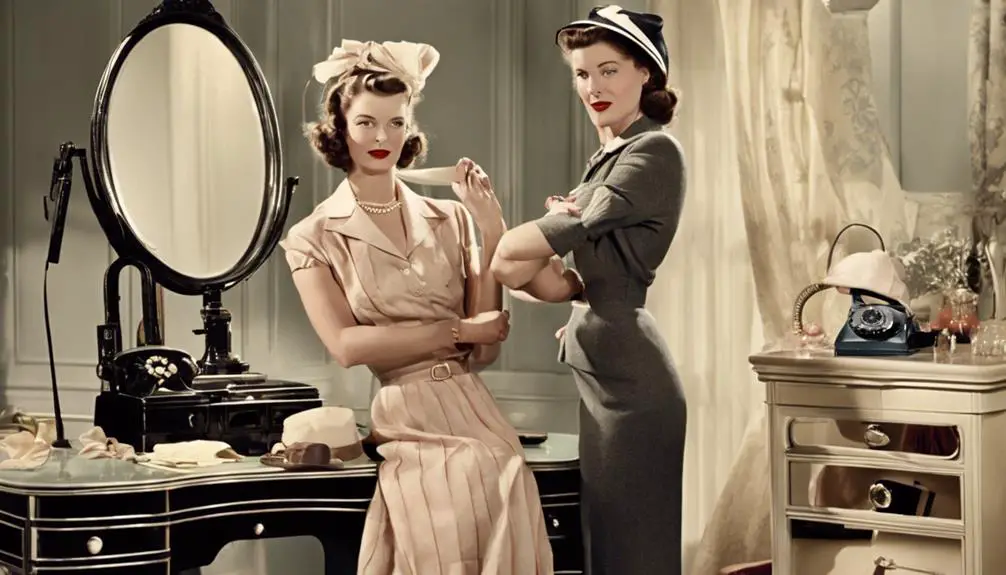
In the 1940s, stockings were more than just a fashion accessory; they became a symbol of resilience and adaptation in the face of adversity. During World War II, the production of silk and nylon stockings faced severe shortages, pushing prices up and prompting government regulation. With many women donating their vintage stockings to support the war effort, bare legs emerged as a common sight, signaling a cultural shift. This period also saw the rise of vintage clothing styles that reflected the ingenuity of women, as they sought alternative ways to express their fashion sense during challenging times. As stockings became scarce, women innovatively turned to leg cosmetics, using makeup to mimic the iconic backseam of stockings, showcasing their resourcefulness vintage clothing characteristics.
The end of the war marked a dramatic return of nylon stockings, leading to frenzied "nylon riots" as enthusiastic consumers rushed to stores. This resurgence wasn't just about fashion; it represented a reclaiming of femininity and a return to traditional norms that had been disrupted by wartime hardships. Stockings, particularly those with backseams, came to symbolize not only elegance but the spirit of a generation that had navigated through adversity. The historical context of stockings in the 1940s illustrates how fashion can reflect broader societal changes, making them an integral part of women's experiences during this tumultuous period.
Fashion Trends in the 1940s
The 1940s witnessed a remarkable evolution in women's fashion, driven largely by the wartime context and shifting societal norms. This era emphasized femininity, particularly through the use of seamed stockings, such as Back Seam Pantyhose. The scarcity of materials during World War II led many women to embrace alternative leg cosmetics to achieve the illusion of stockings when they were unavailable.
As practicality took precedence, stockings became reserved for special occasions. You'd notice women opting for more functional attire, highlighting a cultural shift in daily fashion norms. Significantly, fully fashioned stockings emerged, designed to conform to the leg's shape—though they were fragile compared to today's options.
The table below summarizes key fashion trends of the 1940s:
| Trend | Description |
|---|---|
| Back Seam Pantyhose | Enhanced leg appearance with a classic seam |
| BLACK SEAMED | The staple color for elegant occasions |
| High Socks | Practicality for everyday wear |
| Fully fashioned | Designed for a tailored fit, yet delicate |
| Colorful seams | A rare but welcomed diversification |
Together, these elements encapsulate the distinctive fashion identity of the 1940s, balancing functionality with femininity.
Types of Seamed Stockings
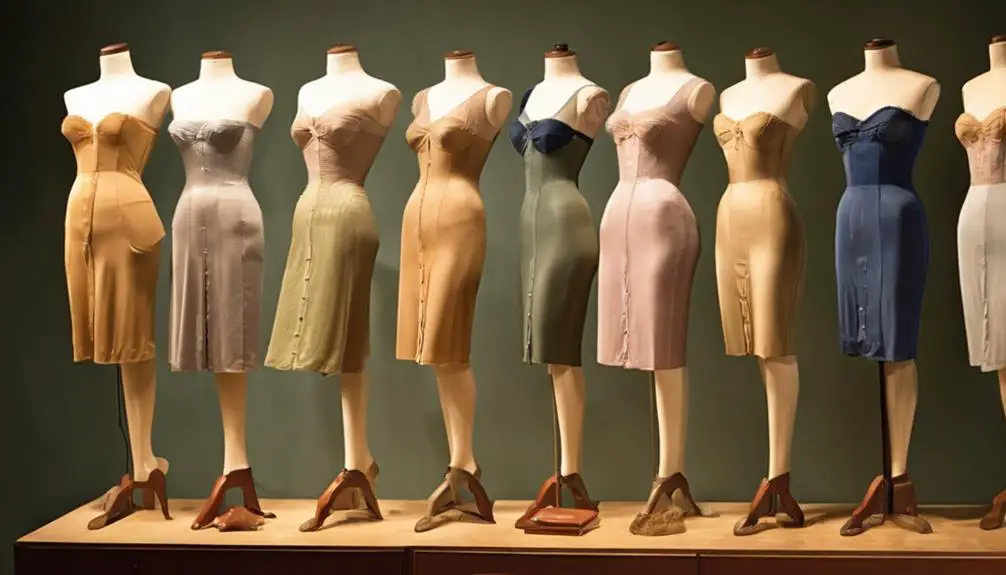
During the 1940s, a variety of seamed stockings emerged, each designed to cater to different preferences and occasions. Among these, backseam stockings stood out with their elegant design, accentuating the leg's natural shape. Made primarily from silk, these stockings offered a luxurious feel and were often favored for special events.
Fully fashioned stockings became increasingly popular during this period, shaped to fit the leg without any stretch. This required meticulous seam alignment, which added to their aesthetic appeal and charm. The Cuban heel, a distinctive feature in many designs, provided both style and reinforcement, making these stockings suitable for everyday wear as well.
The color palette was diverse, ranging from classic nude and black to taupe, with a broader selection available for African-American and Latina women. The scarcity of materials during WWII heightened the demand for these beautiful accessories, leading many women to resort to leg cosmetics to replicate the look of stockings when shortages became critical. Each type of seamed stocking reflected not only personal style but also the resilience and creativity of women during challenging times.
Popular Brands and Models
What brands defined the seamed stockings market in the 1940s? Notable names like Hudson Irregulars and Sheermode emerged, offering a range of vintage nylon styles that captured the essence of the decade. Hudson Irregulars was particularly recognized for its innovative high style seamed stockings, which featured classic back seams that became a signature look.
Henri Mendel made waves with his Dupont nylon stockings, boasting a 15 denier thickness and catering specifically to the popular size 10.5, appealing to a wide range of women. Munsingwear added to the mix with its vintage pink beige panty hose in size 9.5, merging functionality with fashion.
As you explored the market, you'd find Joan Eddy's 1940s DuPont nylon hosiery, available in size 10 and also showcasing the coveted back seam design. For those desiring something unique, antique silk stockings and models featuring Cuban heels offered a touch of elegance. Plus size options were limited, but the search for black stockings with that quintessential seam made every find a moment of triumph in the world of 1940s fashion.
Impact of WWII on Stockings
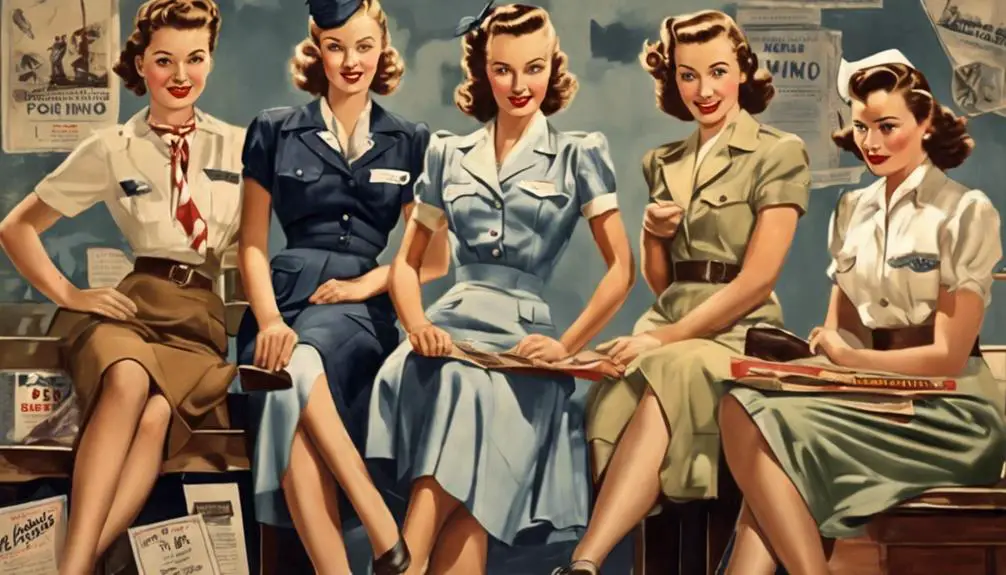
Significant disruptions in the fashion industry occurred due to WWII, deeply affecting the availability and production of women's stockings. With silk and nylon resources heavily regulated, shortages became rampant, prompting women to donate their stockings to support the war effort. Consequently, prices inflated, turning stockings into a luxury item. Many women opted to go bare-legged when stockings were unavailable, reflecting a stark shift in daily fashion norms.
To cope with this scarcity, leg cosmetics gained immense popularity, allowing women to draw faux seams on their legs, mimicking the classic backseam of traditional stockings. As the war ended, a surge in demand for nylon stockings resulted in chaotic "nylon riots," as women clamored to reclaim their pre-war fashion identities. Du Pont struggled initially to meet this high demand, creating a sense of urgency around the availability of thigh high stockings and garter belts.
This post-war period emphasized a renewed focus on traditional femininity, leading to the triumphant return of nylon stockings. Hence, the impact of WWII reshaped not just the market but also the cultural perceptions of women's fashion and femininity, underscoring the intricate relationship between war and style.
Seasonal Variations in Stockings
As the seasons changed, so did women's choices in stockings, reflecting a blend of practicality and style that adapted to the varying climate conditions. In winter, warmth took precedence. Women gravitated towards heavier materials, often selecting double-layered designs with a cozy cotton interior and a sleek rayon exterior. These seamed stockings provided both comfort and a touch of elegance, essential for facing the chilly weather. Heavy knit options emerged as staples, showcasing the practical approach women adopted to maintain warmth.
Come summer, the focus shifted to breathability and lightness. Sheer materials became the go-to for formal occasions, while many opted to forego stockings entirely in hotter climates, using leg makeup to achieve a polished look. However, over-the-calf knee highs still found their place, often secured with elastic bands just below the knee. This choice offered a blend of coverage and comfort, a necessity when pairing with skirts or lighter pants.
Ultimately, these seasonal variations in stockings highlight how women deftly balanced functionality with aesthetics, showcasing their adaptability to both fashion trends and environmental demands during the 1940s.
Maintenance and Care Tips
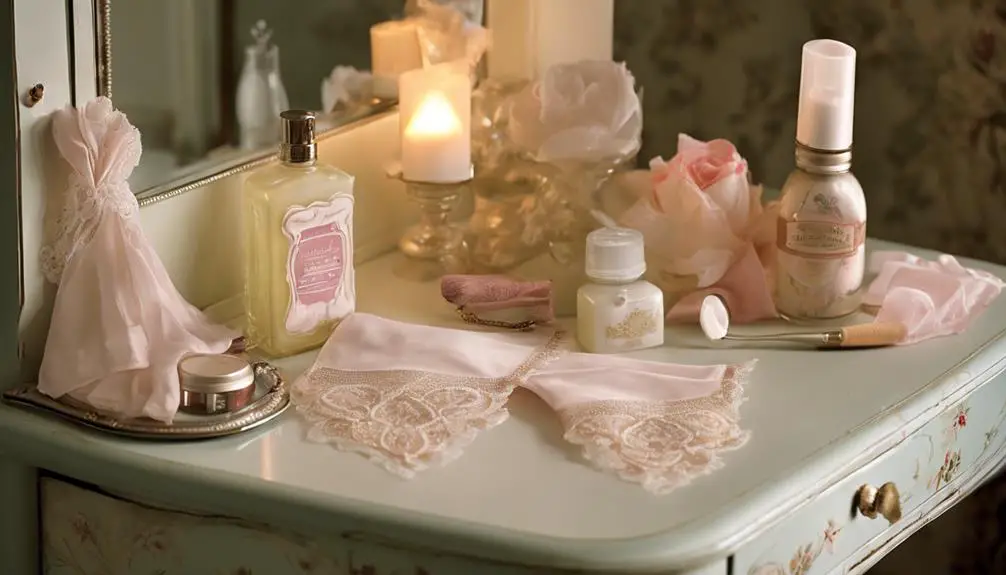
Proper maintenance and care of women's seamed stockings from the 1940s is essential for preserving their beauty and longevity. To keep your vintage hosiery in pristine condition, always hand wash your stockings in mild soap. This gentle approach protects the delicate fibers, preventing damage that machine washing can cause.
After washing, lay your black or nude stockings flat to dry. Avoid hanging them, as this can lead to stretching and misshaped fabric, compromising the elegant silhouette that defines these vintage pieces. Before slipping into your pantyhose, apply lotion to any rough spots on your heels and feet. This simple step minimizes the risk of snags and tears, ensuring your stockings remain intact.
Store your vintage stockings away from direct sunlight and extreme temperatures, which can lead to discoloration and degradation. Regularly inspect your hosiery for signs of wear, such as runs or holes. Prompt repairs can greatly extend the life of your beloved stockings. By following these maintenance tips, you'll cherish your 1940s seamed stockings for years, keeping their charm and character alive in your wardrobe.
Shopping for Vintage Stockings
When diving into the world of vintage stockings, especially those from the 1940s, you'll discover a treasure trove of styles and designs that reflect the era's unique fashion sensibilities. Shopping for these exquisite pieces requires a discerning eye, as you'll encounter everything from fully fashioned to seamed stockings, each with its own charm.
To assist you in your search, consider the following table outlining key aspects of vintage stockings:
| Style | Features | Price Range |
|---|---|---|
| Seamless | Smooth design, no seams | $10 – $50 |
| Fully Fashioned | Tailored fit, back seam details | $20 – $175 |
| Cuban Heel | Distinctive heel design | $30 – $150 |
| Rare Collectibles | Unique patterns, limited availability | $50 – $175+ |
Authenticity is vital—always inspect for wear and tear to guarantee quality. Many listings offer "or Best Offer," allowing for negotiation. Plus, with shipping options like free delivery or local pickup, you can easily bring these high-style vintage stockings into your wardrobe. Happy hunting!
Frequently Asked Questions
Did They Wear Stockings in the 1940s?
Yes, they did wear stockings in the 1940s, often as a fashion statement. However, wartime shortages made them scarce, forcing many to resort to alternatives, like cosmetics, to achieve a polished appearance.
Why Did Stockings Have a Seam?
Stockings have seams for both function and style. They enhance fit by shaping the leg, while the visual line adds elegance. This combination not only accentuates your silhouette but also signifies sophistication in your wardrobe choices.
What Do You Call Stockings With the Seam at the Back?
You'd call stockings with a seam at the back "back seam stockings." This design enhances leg shape and elegance, offering both style and support, making them a timeless fashion choice that emphasizes sophistication and femininity.
Did 1920S Stockings Have Seams?
In the 1920s, stockings didn't have seams; they were typically seamless, crafted from silk or rayon. This innovation provided comfort and a sleek appearance, marking a significant shift in hosiery fashion during that era.
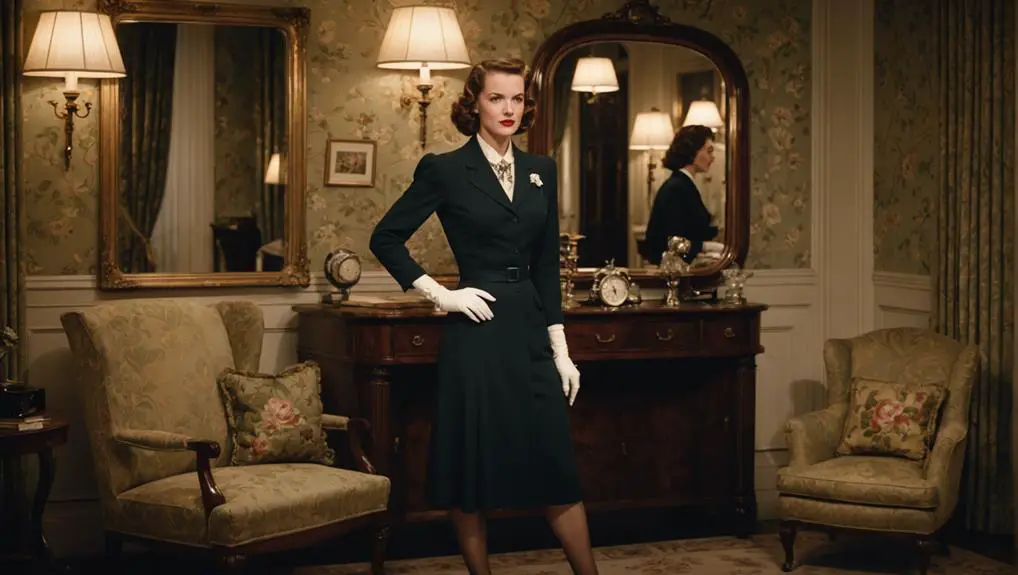


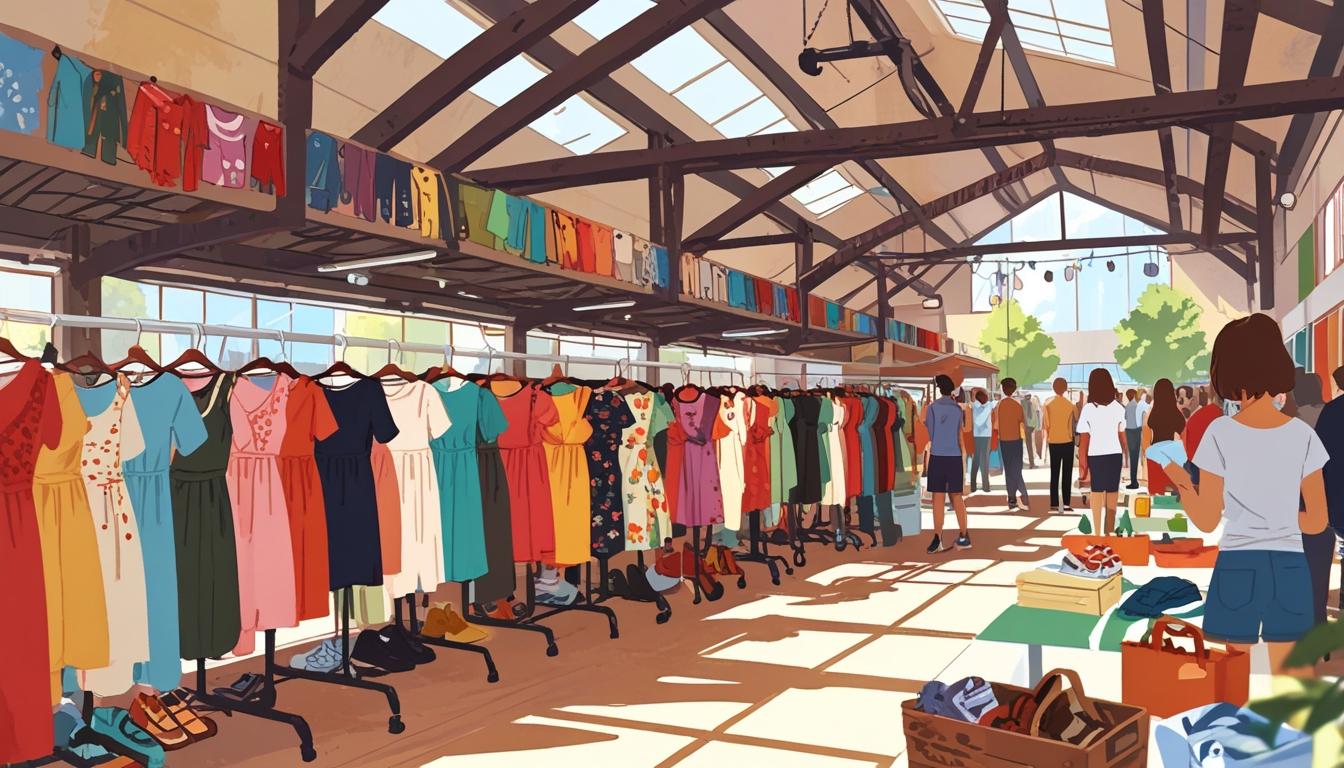

Hi there! Do you know if they make any plugins to safeguard against hackers?
I’m kinda paranoid about losing everything I’ve worked hard
on. Any tips?
Hey There. I found your blog the use of msn. That is a really neatly written article.
I will be sure to bookmark it and come back to read more
of your helpful information. Thank you for the post.
I’ll certainly return.
I have fun with, cause I discovered just what I used to be taking
a look for. You’ve ended my 4 day long hunt! God Bless you man. Have a
great day. Bye
hello there and thank you for your information – I have definitely picked up something new from right here.
I did however expertise several technical points using this website, as I experienced to reload the website lots of times previous to
I could get it to load properly. I had been wondering if
your hosting is OK? Not that I’m complaining, but sluggish loading instances times will very frequently affect your placement in google and could damage your high-quality score if advertising and marketing with Adwords.
Anyway I’m adding this RSS to my e-mail and could look out for a lot more of your
respective interesting content. Make sure you update this again soon.
???????? ???????? 480
?????? ????? – ????? ????????????.
???? ?????????. ?????? – ????? ????????????.
???? ??????
?? ????.